
- Homepage
- Brand
- Accelera (14)
- Air Handler (12)
- Atlas Tire (14)
- Cooper (12)
- Fluval (13)
- Forceum (20)
- Fullway Tires (68)
- Goodyear (15)
- Gt Radial (13)
- Hankook (14)
- K & N Filters (34)
- Kenda (15)
- Lasfit (13)
- Lexani (50)
- Lionhart (74)
- Marine Biosystems (14)
- Perfect Fit (12)
- Smartliner (15)
- Sporlan (11)
- Summit (45)
- Other (1270)
- Features
- 100% Leak Tested (2)
- 60-day Return Policy (2)
- Black Letters (5)
- Black Sidewall (213)
- Cleaning (2)
- Easy Clean (4)
- Easy Installation (18)
- Easy To Replace (4)
- Fan Function (5)
- Heavy Duty (4)
- Hepa Filter (2)
- Moisture Resistant (12)
- Outline White Letter (5)
- Padded (2)
- Portable (3)
- Projector Housing (4)
- Pull Out Door (4)
- Raised White Letters (10)
- Sealed (2)
- Single-speed (4)
- Other (1441)
- Model
- 2.0hp (11)
- Air Handler 6b924 (12)
- Cobra Radial Gt (10)
- Force Uhp (11)
- Hp108 (62)
- Hs266 (8)
- Lh-501 (9)
- Lh-503 (21)
- Lh-five (15)
- Lh-ten (10)
- Lionclaw Atx2 (5)
- Lionclaw Ht (8)
- Lx-30 (6)
- Lx-twenty (10)
- Lxuhp-207 (15)
- Muchomacho (5)
- Sport A / S (10)
- Srx (9)
- Ultra Max As (19)
- Ultra Max Hp (8)
- Other (1484)
- Product Line
- American Roadstar (10)
- Az810 (3)
- Az850 (4)
- Capricorn Hp (5)
- Citytraxx H / P (5)
- Force Uhp (10)
- Hp108 (11)
- Hs266 (9)
- Iota St68 (5)
- Lx-thirty (6)
- Lx-twenty (6)
- M / T (4)
- M / T 08 Plus (3)
- Muchomacho (6)
- New Mutant X-rt (3)
- Octa (3)
- Paraller A / T (3)
- Phi (3)
- St Radial Ii (3)
- Turanza Quiettrack (3)
- Other (1643)
- Section Width
- Tread Depth
Universal New Turbocharger COMPRESSOR BOOST. 63 A/R. 5A/R I9UDLT SDD-TBCT04ET
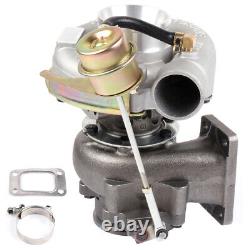
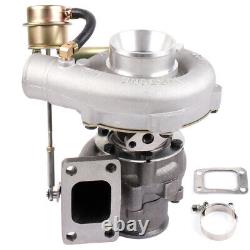


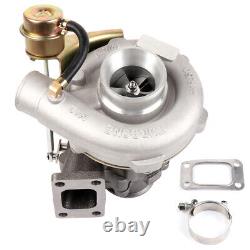
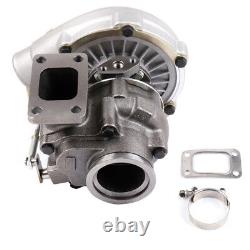
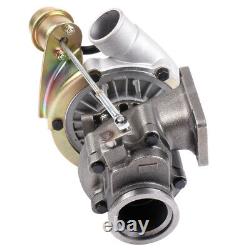
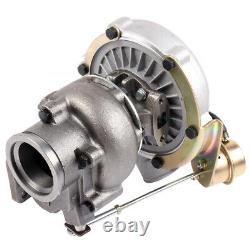
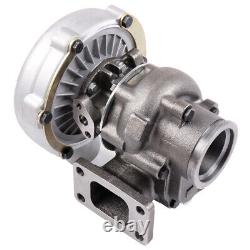

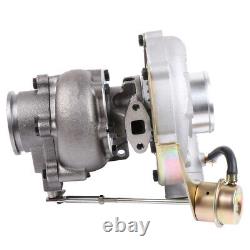
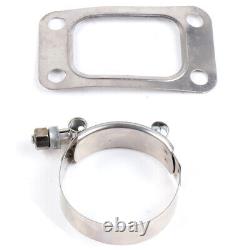


Inlet / Outlet Diameter:3" / 2". Compressor Inducer /Exducer (MM):50.5 / 76.00. Turbine Inducer / Exducer (mm):65.5/55.9. Exhaust (Turbo Manifold) Flange:T3 T4 4 bolt Flange Patterns.
Exhaust (Downpipe) Flange:V-Band Flange. Boost PSI:0.5bar - 1bar (7.3psi - 14.5psi). How To Replace a Broken Turbocharger Kit. How To Identify a Failed Turbo. Universal New Turbocharger COMPRESSOR BOOST.Inlet / Outlet Diameter: 3" / 2". Compressor Inducer /Exducer (MM): 50.5 / 76.00. Turbine Inducer / Exducer (mm): 65.5/55.9. Exhaust (Turbo Manifold) Flange: T3 T4 4 bolt Flange Patterns.
Exhaust (Downpipe) Flange: V-Band Flange. Boost PSI: 0.5bar - 1bar (7.3psi - 14.5psi).If there's one thing that frustrates a driver, it's their car acting up unexpectedly. Whether it's a sudden problem out of nowhere or a prolonged issue transitioning into a bigger one, it can become a stressful and expensive ordeal. This is especially true when it comes to replacing a non-functional turbocharger. So, here's a quick guide for identifying a failed turbo and steps for how to replace a broken turbocharger kit. Unexpected repairs are a part of life.
Try not to get overwhelmed by them. Grab your tools, your owner's manual, and a water bottle; you have a lot of work to do. Since engine oil makes your car function correctly, it needs to stay clean and get replaced over time. It helps lubricate key moving parts, cools them cool while in use, and protects the engine from corrosion. When your engine experiences oil starvation, contains an incorrect grade of oil, or suffers from poor oil quality, it can create a buildup of contaminants. It results in abrasive damage inside the turbo. Don't forget: filter replacements and correct engine oil matter. Having seals will prevent leaks and corrosion inside your turbocharger and engine. If the compressor and engine seals become worn or cracked, the exhaust system will experience leaks, quickly deteriorating the turbocharger. Because of wear and cracks forming, it causes the turbo to work harder to release air pressure. When installing a turbocharger, its life expectancy matches the vehicle itself-roughly 150,000 miles or more. However, turbochargers may wear out sooner depending on how hard you are on your car and the quality of the turbo. So, you must monitor and maintain your turbo throughout its life.The compressor and turbine are the fundamental components of a turbocharger. Compressed air, fuel, and power result in a satisfying boost in your engine. However, foreign contaminants such as dirt, dust, and small debris do enter the turbo.
It usually occurs in either the turbine inlet or the compressor, getting caught in the air filter before reaching too far into the housing. If foreign objects end up in the compressor, it's due to the air filter. Oppositely, it can result from things entering the turbine, resulting in further issues. Ensure that your filter gets replaced regularly to prevent rogue debris. Let Turbo Run to Functional Temperatures. Before removing the turbo, let the engine run at its functional temperature. Because of the oil's low viscosity, you'll have a better chance of removing as much of it as possible. From there, you can flush the oil mixture and disposal method based on your owner's manual guide. Remove Old Filters and Turbo.After emptying the oil, remove the oil filter and discard it. Everything must remain clean before the new turbocharger installation. Don't forget to remove the oil feed pipe. Secondly, start to remove the old turbocharger by locating the exhaust pipe, removing the bolts, and detaching the piping. Ensure proper intercooler removal and cleaning to remove any oil by flushing it with an oil degreaser.
After removing the old turbocharger, the next step is to separate it from the exhaust manifold. You unscrew the nuts and bolts holding it together, then lift the turbo through the top or below the engine compartment. Once your remove everything, make sure to correctly install the new turbocharger, linking all necessary parts back together. Reconnect it to the exhaust manifold with the correct nuts and bolts and tighten it correctly. Then, reattach the turbo intercooler, the air intake, and the exhaust downpipe.
Once everything has been adequately checked, you're nearly done. Replace Oil Feed Pipe and Flush Oil. When you introduce the new turbocharger, it's vital that you replace the oil feed line, copper washes, and banjo bolts. Squeeze some engine oil into the turbo oil bay for lubrication, then ensure that the oil return pipe is clean. After removing the old oil and filter, install a new filter and add new oil.After installing your new turbocharger, you must go through the final checks to ensure that your vehicle will run optimally. When you start your engine and run the turbo, don't immediately rev it. Instead, allow for your car to run for 10 seconds, then shut it off. This is the time to check for oil leaks or dripping.
Wait a few moments before checking the oil level. Top it off if needed. From there, you can restart your vehicle.
Don't rev your engine, but let it stay idle so that it can reach running temperatures. Universal hybrid T3 turbo for all 4 6 Cylinder engine. 50.5 / 76.00. Turbine Inducer / Exducer (mm). We cannot change any address after checkout has been completed.Please make sure you submit your correct address! Except weekend and other irresistible factors. Our return process is simple and fast.
READ the notes on the compatibility chart. Rear Ceramic Brake Pads For Audi A4 TT A6 Volkswagen Beetle Jetta. Pair Manual Towing Mirrors for 99-07 Chevy Silverado GMC Sierra Truck 1500 2500. Front Ceramic Brake Pads For Acura ILX Honda Accord CR-V Element Fit Pilot. Rear Ceramic Brake Pads For Infiniti EX35 FX37 G35 JX35 Nissan 350Z Suzuki.Rear Ceramic Brake Pads For Acura Integra Honda Accord Suzuki Kizashi. Catalytic Converter For Nissan Sentra 1.8L 2003 2004 2005 2006 EPA Front 55438.

